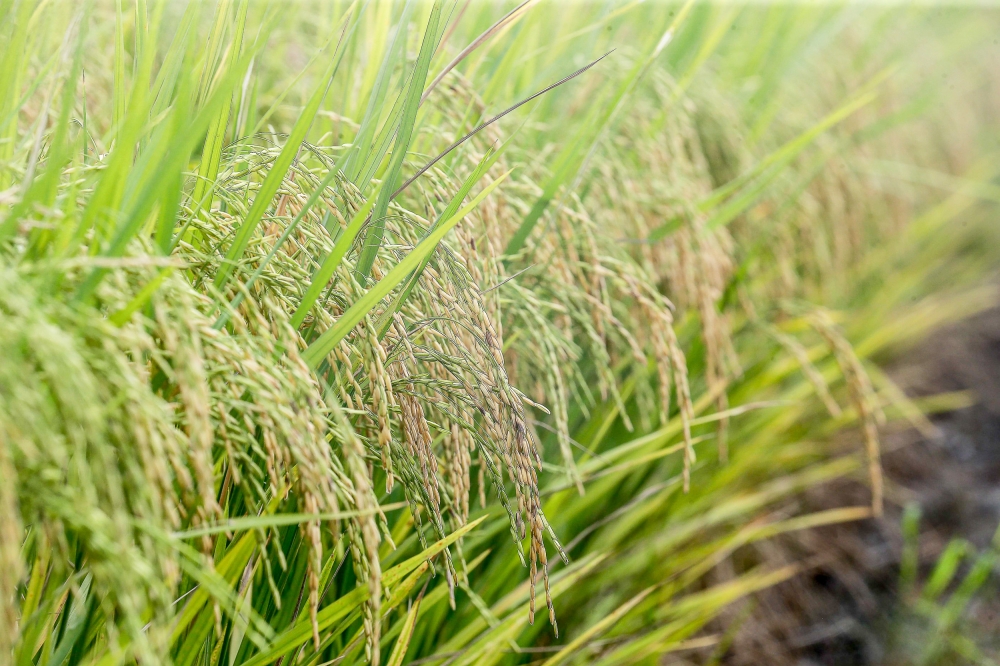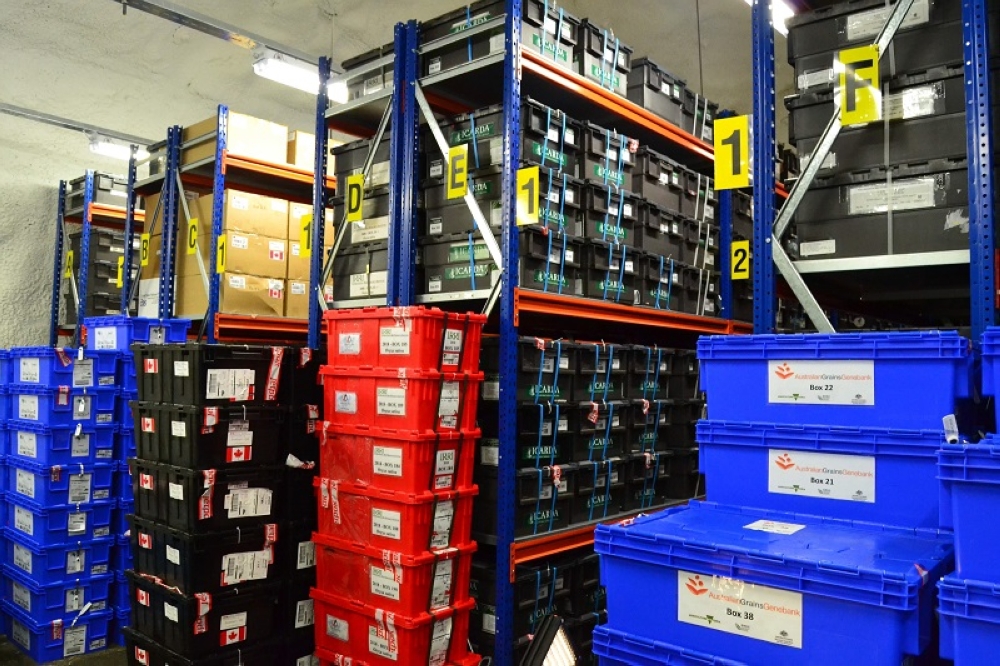KUALA LUMPUR, June 23 — Malaysia has made significant strides in safeguarding agricultural biodiversity by participating in the ten-year Biodiversity for Opportunities, Livelihood, and Development (Bold) project with Crop Trust.
This project is dedicated to protecting and utilising crop diversity for sustainable agriculture and food security.
Speaking to Malay Mail, Crop Trust communication manager Luis Salazar said the Malaysian Agricultural Research and Development Institute (Mardi) has deposited 207 rice seeds into the Svalbard Global Seed Vault.
The Svalbard Global Seed Vault provides insurance against both incremental and catastrophic loss of crop diversity held in traditional gene banks around the world. The Seed Vault offers long-term protection for one of the most important natural resources on earth.
He said this effort is part of a global initiative to protect agricultural biodiversity through collaboration among gene banks worldwide.
“We work with national and international gene banks, as well as what we term non-traditional gene banks such as universities or community-based NGOs to achieve our mission on a global scale. Each entity faces unique challenges and serves specific users who require diverse crop varieties.
“Our goal is to enhance and sustain this global system for the benefit of present and future generations, exemplified by our partnerships with organisations like Mardi. In the bold project, there is a specific work package focused on regenerating and safely duplicating crop diversity, which is fundamental to gene banks ensuring the safety and availability of their seeds, tubers, or field collections,” he told Malay Mail in an interview.
Salazar explained that the initiative saw Mardi meticulously collecting wild relatives of vital food crops, such as bananas, and distributing this diversity globally in collaboration with prestigious institutions like Kew’s Millennium Seed Bank in the United Kingdom (UK).
He added that the partnership highlights Malaysia’s commitment to contributing valuable genetic resources to the global community.
“Part of this collection was shared globally through the Millennium Seed Bank, while another portion enriched Mardi’s national collection which was part of a grant call under the Bold project,” he added.
He then went on to say that they aim to assist various gene banks worldwide in safely duplicating their collections, having received 90 proposals for the initiative.
Out of these submissions, he said 42 institutions from 30 countries, including Mardi in Malaysia, were selected to participate in the two- to three-year efforts.
“Many gene banks lack sufficient funds for such projects beyond basic operations, but successful gene banking involves not only maintaining collections, but also sharing materials globally and meeting safety duplication standards.
“As part of the Bold project, we are facilitating the transfer of materials to the Svalbard Global Seed Vault, which aims to ensure future food security by preserving crucial crop diversity. This diversity, encompassing thousands of varieties like maize, potatoes and rice, is vital as it may hold traits essential for sustainable agriculture in the face of future challenges,” Salazar said.
He added that the initiative serves as an insurance policy that aims to preserve all options for future agricultural needs, uncertain of which traits will be crucial in the coming decades.
By maintaining a diverse array of crop varieties, including wild relatives historically viewed as pests, he said the project seeks resilience in agriculture against climate-induced challenges such as droughts, floods, salinity, frost and pests.
Salazar said storing seeds in cold rooms while regularly testing their viability to ensure they remain capable of germination — if viability falls below approximately 85 per cent, the seeds need to be regrown to preserve their viability.

Mardi seed preservation process with Svalbard Global Seed Vault
Salazar said Mardi’s seed deposit process is meticulous and adheres to international agreements and protocols, in which the initial step involves coordinating with the Nordic Genetic Resource Centre (NordGen), which is responsible for managing technical aspects and communication with the seed vault coordinator.
He also explained that under the Food and Agriculture Organisation (FAO) Plant Treaty, there’s an agreement allowing cross-border seed sharing, emphasising the global collaborative effort in seed conservation.
He said Mardi commits to making their seed diversity available to the world, ensuring transparency and accessibility to gene banks worldwide.
“The regeneration process is crucial, beginning with planting seeds from their cold storage, nurturing them through growth stages, and meticulously harvesting and drying them to specified standards, including humidity control. After reaching optimal conditions, seeds are vacuum-sealed in specialised bags with labels identifying their contents.
“Once prepared, the seeds are boxed and shipped, with some gene bank personnel accompanying them for security. Upon arrival at Svalbard, the shipment undergoes an X-ray inspection to verify contents without opening the boxes. The seed vault coordinator receives a detailed list of the deposited seeds, which are then stored in designated rooms within the vault,” he said.
Salazar said upon receiving a shipment, the Seed Vault Chlorinator logs the inventory into the seatbelt database, meticulously recording each item’s details.
These items are then transported through a secure tunnel to one of three designated storage rooms.
“Once the items are securely placed, staff document their location with photographs and update the database, sending confirmation to the coordinating authority,” he said.
Salazar said as agricultural zones shift due to climate variations, he said varying soil qualities present new challenges as even the most impoverished soils require crops capable of thriving with minimal resources.
Explaining more, he said the Svalbard Global Seed Vault is a free service provided by Norway to the global community, managed jointly by the Crop Trust, NordGen and the Norwegian Ministry.

Security and functionality of the gene bank
He said many gene banks lack the resources such as financial, human and infrastructural to maintain adequate safety duplicates. Therefore, international standards, such as those set by the FAO, recommend gene banks keep at least two safety duplicates, ideally in different countries.
As an example, Salazar said a gene bank in Malaysia might send one duplicate to the International Rice Genebank in the Philippines and another to the Svalbard Global Seed Vault in Norway to ensure that if a disaster strikes one location, seeds can still be retrieved from the other.
“Two approaches govern how these duplicates are managed, which is the ‘black box’ approach, where only the depositor has access to the seeds, akin to a bank deposit box, and a shared responsibility approach, where receiving gene banks must maintain and share the seeds they receive.
“These measures aim to safeguard crop diversity against potential losses due to accidents, conflicts, or other unforeseen events,” he said.
In the context of global gene banks, he explained that each institution typically chooses which seeds to regenerate, with external assistance provided as needed. Adding more, Salazar said while ensuring operational continuity is crucial, the success of a gene bank hinges on its ability to share genetic materials. This necessitates not only maintaining a diverse seed inventory but also meeting rigorous safety duplication standards.
“Under initiatives like the Bold project, gene banks have been gradually sending materials to the Svalbard Global Seed Vault since last year, marking a significant step towards completing this collaborative effort.
“This endeavour aims to address future food scarcity challenges by preserving a vast array of crop varieties, including maize, potatoes, and rice, each potentially holding traits vital for sustainable agriculture in the coming years,” he said.
Challenges in maintaining the vault
Asked on the challenges in maintaining the seed vault, Salazar said situated in the Arctic Circle, the vault was carefully selected after a comprehensive risk management study that considered factors like rising sea levels, melting snow, and its remote location with sparse human habitation.
He explained that the vault itself consists of seeds stored 120 metres inside a tunnel, maintaining a temperature of -18 degrees Celsius, crucial for seed preservation.
“In the event of a power outage, the vault can sustain temperatures around -5 degrees Celsius, providing a buffer period for corrective actions.
“This Arctic location ensures stable conditions for seed storage, unlike the challenges faced in hotter climates such as Mexico or Malaysia, where maintaining such low temperatures would require significantly more energy,” he said.
Salazar emphasised that the likelihood of any incident affecting the vault is exceedingly low compared to national gene banks elsewhere in the world.



















